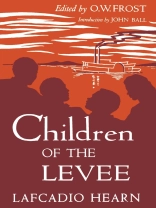Cincinnati in the 1870’s was the largest inland city in the nation. Much of its prosperity and growth it owed to the commerce which floated along its Ohio River boundary on the way between Pittsburgh and New Orleans. This traffic also sustained a unique African American culture—saloonkeepers, boardinghouse operators, entertainers, and women who served the steamboat hands between trips.
Into this great western metropolis came young Lafcadio Hearn, who after several tentative starts became a newspaper reporter first for the Enquirer and then for the Commercial. Drawn to the Ohio River by his interest in the unusual, Hearn found beneath the rough surface of levee life a kind of cosmopolitan tolerance which emphasized the essential humanity of the community.
Hearn’s twelve sketches—here reprinted as a unit for the first time—are perceptive and sympathetic, yet not highly subjective and romanticized. Collectively they form an important comprehensive picture of African American life in a border city just after the Civil War. Among the earliest of his writings, they also foreshadow the course Hearn’s life was to take in New Orleans, the West Indies, and finally Japan.
Über den Autor
John Ball, who wrote the introduction, is professor of English at his alma mater, Miami University, Oxford, Ohio. The Ph.D. degree was awarded him by the University of Cincinnati.












